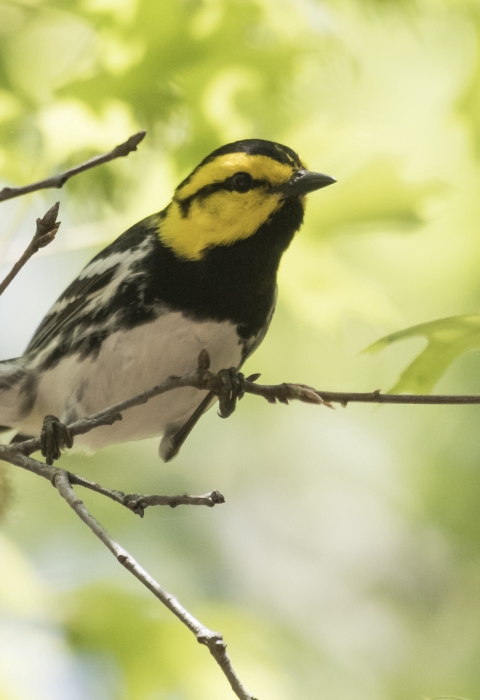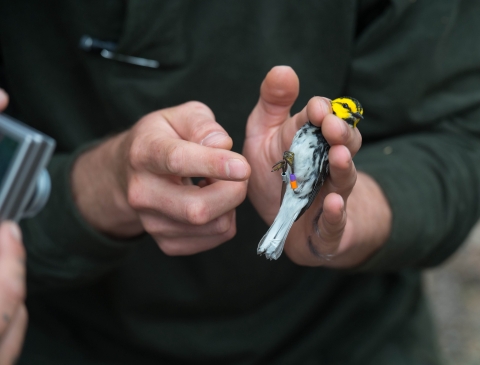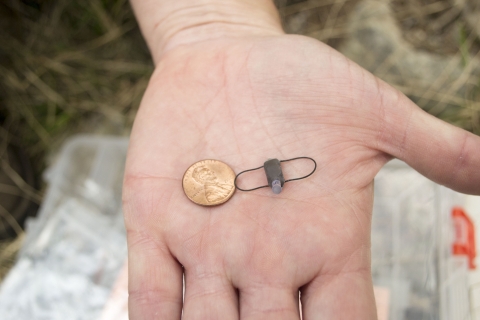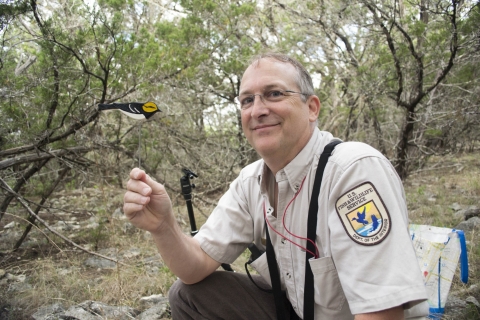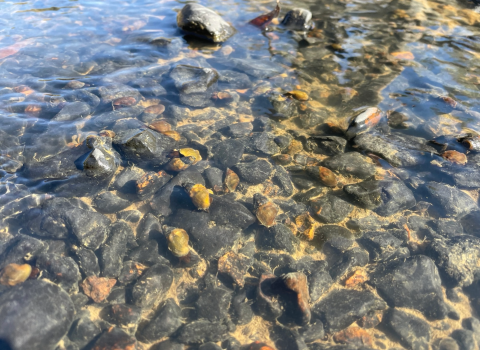How do biologists know where birds spend their time?
Some bird species spend summers in Alaska and winters in Florida, and when they’re doing that much traveling, it can be hard for scientists to keep track of them. Observations of bird sightings recorded by citizen scientists can be used to determine migration patterns for species, like this project from Cornell’s Ornithology Lab. Sometimes we also need to know where specific individuals or populations migrate, and one tried and true method of tracking individual birds is color banding. Birds are caught in mist nets and colored bands are fitted around their legs. These bands can be spotted by birders and researchers and reported so that the bird can be tracked.
There’s one endangered songbird, the golden-cheeked warbler, that spends its summers in the hill country of Central Texas and its winters in Central America, but we don’t know much about specific populations and where they go. None of the warblers banded by biologists at Balcones Canyonlands National Wildlife Refuge have been reported in their winter range, so as biologist Scott Rowin points out “We don’t know where the warblers over-winter or if they return to the same wintering location each year. By knowing this we can work to better protect their wintering ground.” Agencies across local, state, and federal governments, along with other non-governmental organizations, expend resources protecting the breeding grounds and habitats of this endangered species, but to guarantee their future we need to ensure safe and healthy habitat across their range.
“Backpacks” Help Track Birds
Enter Project Geolocator, also known as Backpacks for Birds. In the spring of 2017, researchers with the U.S. Fish and Wildlife Service, Texas A&M University, and the Department of Defense safely captured golden-cheeked warblers using mist nests in targeted locations. These birds were measured, banded (if they didn’t have bands already), and fitted with a small geolocator.
The device weighs less than half a gram, and studies done with similar birds show that the birds aren’t negatively affected by wearing it. The geolocator records locations based on the position of the sun, and stores the data until the units are recovered. The backpacks can store about eight months of data and should be accurate to within about seventy five kilometers (about fifty miles).
Bird Backpacks in Action
In an effort to represent the species throughout their relatively small breeding range, one hundred golden-cheeked warblers were outfitted with backpacks at Fort Hood, Camp Bullis, Kerr Wildlife Management Area, Dinosaur Valley State Park, and Balcones Canyonlands National Wildlife Refuge. Researchers were optimistic that they could retrieve at least half of the devices and data the following spring through a recapture mist netting operation. The information will be analyzed to determine where the warblers have been and better target conservation efforts in their winter habitats.
